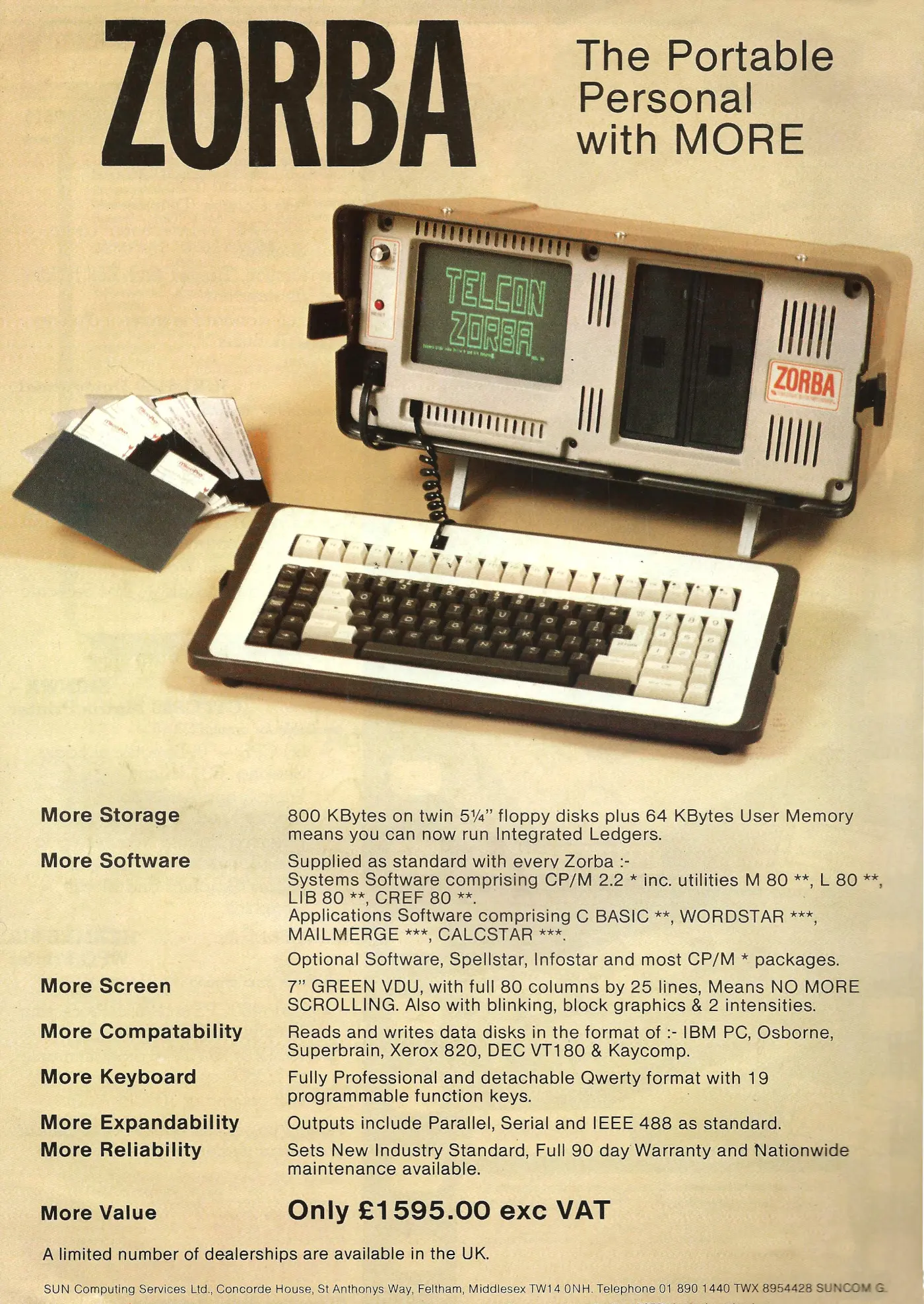Telcon/Zorba Advert - October 1983
From Practical Computing

Zorba: The portable personal with more
This almost-comedy wannabe hack at the Osborne and Kaypro market, with its claim that cramming 80 columns on to a 7" screen is somehow a good thing, appeared in 1983 and was considered as one of the last ever pure CP/M machines, although many machines followed which supported CP/M as a "feature", like Commodore's 128 or Amstrad's PCW.
However, with its bigger disks - with multi-format reading compatibility - and a nicer display, it was actually considered by Personal Computer World as:
"one of the more impressive improvements on the concept of the 'computer under the airline seat' which Osborne pioneered".
Despite compatibility with its two main rivals, as well the Superbrain, Xerox 820, IBM PC, DEC and Televideo, and even following the Osborne business model by bunging in a bunch of free software, the machine sold poorly, racking up around 6,000 sales in its lifetime[1].
There's no explanation for the name Zorba, especially given that the machine was originally built for Modcomp Incorporated by Telcon Industries of Fort Lauderdale, Florida in the US[2].
That's several thousand miles away from the Cretian setting of the book Βίος και Πολιτεία του Αλέξη Ζορμπά, otherwise known as The Life and Citizenship of Alexis Zorba, a.k.a Zorba the Greek.
The Zorba 2000 retailed for £1,595 + VAT, which is around £8,100 in 2025. Within a month or so it released an updated model with a "massive" 9" screen.
In the summer of 1983, following an announcement at the National Computer Conference in Anaheim, Telcon had been bought outright by minicomputer builder Modcomp, with Modcomp's general manager Mike Rogers explaining:
"We wanted to distribute the micro and it was like that [Remington] electric shaver advert - we liked the product so much, we ended up buying the company".
There were plans to manufacture some Zorbas in Ireland, where Modcomp already had a factory, with the possibility of some manufacture moving to the UK as well.
However, as Guy Kewney wrote in August 1983's Personal Computer World, the company needed to move fast. The company's basic £600 model was up against the Osborne 1, which thanks to Osborne's financial troubles was likely to be discounted to under £1,000 within a month or so of the announcement, whilst newer portables were on the horizon from Hyperion, Corona and Compaq.
As one dealer apocryphally said:
"No, I won't be stocking [the Zorba], because people will come in and ask 'how does it compare with the Osborne', whereas if I show them the Osborne they never say 'how does it compare with the Zorba' or whatever[3]".
Date created: 05 February 2024
Last updated: 31 January 2025
Hint: use left and right cursor keys to navigate between adverts.
Sources
Text and otherwise-uncredited photos © nosher.net 2025. Dollar/GBP conversions, where used, assume $1.50 to £1. "Now" prices are calculated dynamically using average RPI per year.